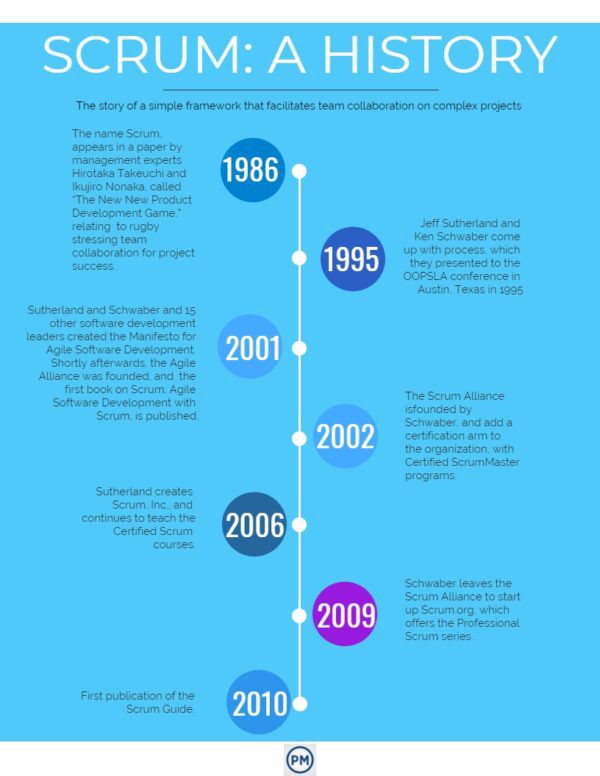Scrum không chỉ là một trong những phương pháp phát triển phần mềm được sử dụng rộng rãi nhất trong thế giới agile mà còn là một trong những khung phổ biến nhất.
Lịch sử của phương pháp Scrum bắt đầu vào năm 1986. Năm đó, hai chuyên gia kinh doanh Nhật Bản đã giới thiệu thuật ngữ này trong bối cảnh phát triển sản phẩm. Hirotaka Takeuchi và Ikujiro Nonaka đã xuất bản bài viết,“Trò chơi phát triển sản phẩm mới mới” (cái “Mới” đôi thực sự là một phần của tiêu đề) trong Tạp chí Harvard Business Review. Các tác giả đã mô tả một cách tiếp cận mới đối với phát triển sản phẩm thương mại nhằm tăng tốc độ và tính linh hoạt. Cảm hứng của họ đến từ các nghiên cứu trường hợp từ các công ty sản xuất trong ngành ô tô, máy photocopy và máy in.
Scrum là gì và không phải là gì?
- Ở mức độ cao, Scrum nhẹ và dễ hiểu, nhưng khi bạn đi sâu vào, bạn sẽ thấy rằng nó khó để thành thạo.
- Scrum là một khung hoặc mô hình; nó không phải là một quy trình.
- Scrum không nói cho bạn cách làm mọi thứ, nó nói cho bạn biết những gì cần phải làm và để bạn tự tìm ra cách thực hiện.
- Để làm cho nó còn khó hiểu hơn, Scrum không phải là nghĩa đen; bạn phải điều chỉnh những gì nó nói để phù hợp với hoàn cảnh của bạn.
- Scrum là một khung cân bằng tốt, tất cả các phần của nó đều cần thiết để có hiệu quả.
Lịch sử ngắn gọn về Scrum
Scrum ra đời từ ngành sản xuất vào năm 1986 và sau đó được mở rộng bởi ngành phát triển phần mềm như một phương pháp agile để đối phó với các quy trình quản lý dự án theo kiểu thác nước đã được thiết lập.
Jeff Sutherland đã khởi xướng dự án Scrum đầu tiên vào năm 1993. Sutherland, làm việc với Ken Schwaber, đã phát triển Scrum như một quy trình chính thức vào năm 1995. Năm 2001, Sutherland và Schwaber, cùng với một số người tiên phong trong tư duy agile đã hội tụ tại một khu nghỉ dưỡng trượt tuyết ở Utah để đánh giá những điểm chung trong các phương pháp agile. Tuyên ngôn Agile đã được tạo ra từ sự đồng thuận của nhóm này.

Nhiều bài viết về Scrum
- Hướng dẫn toàn diện về Scrum
- Ba trụ cột của Scrum là gì?
- Phát triển phần mềm Agile là gì?
- Scrum trong 3 phút
- 5 giá trị của Scrum là gì?
This post is also available in Deutsch, English, Español, فارسی, Français, Bahasa Indonesia, 日本語, Polski, Portuguese, Ру́сский, 简体中文 and 繁體中文.













